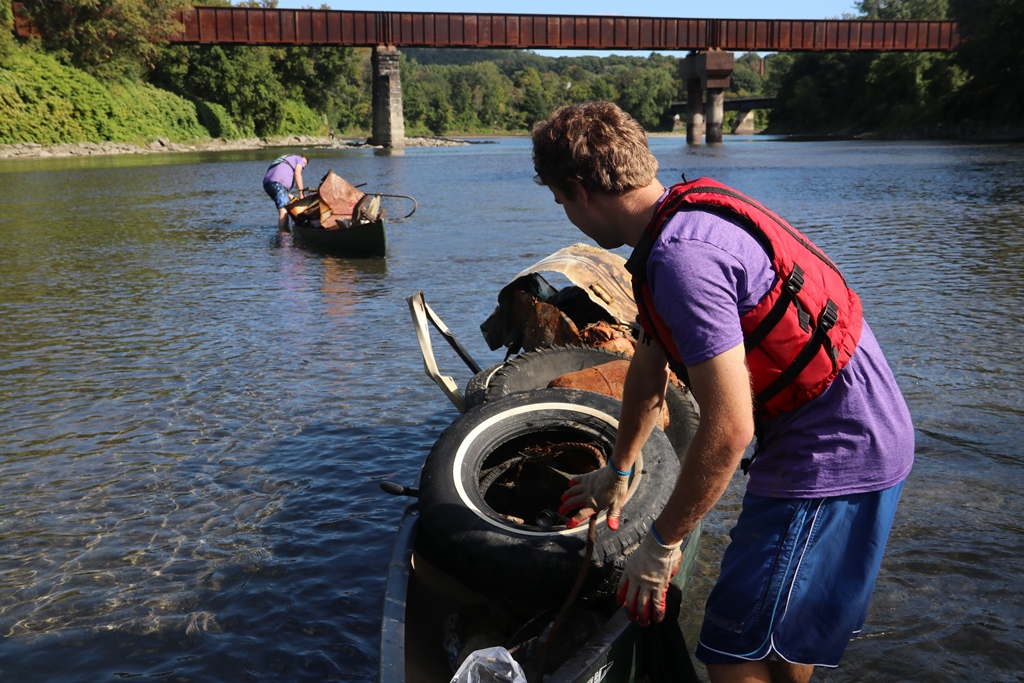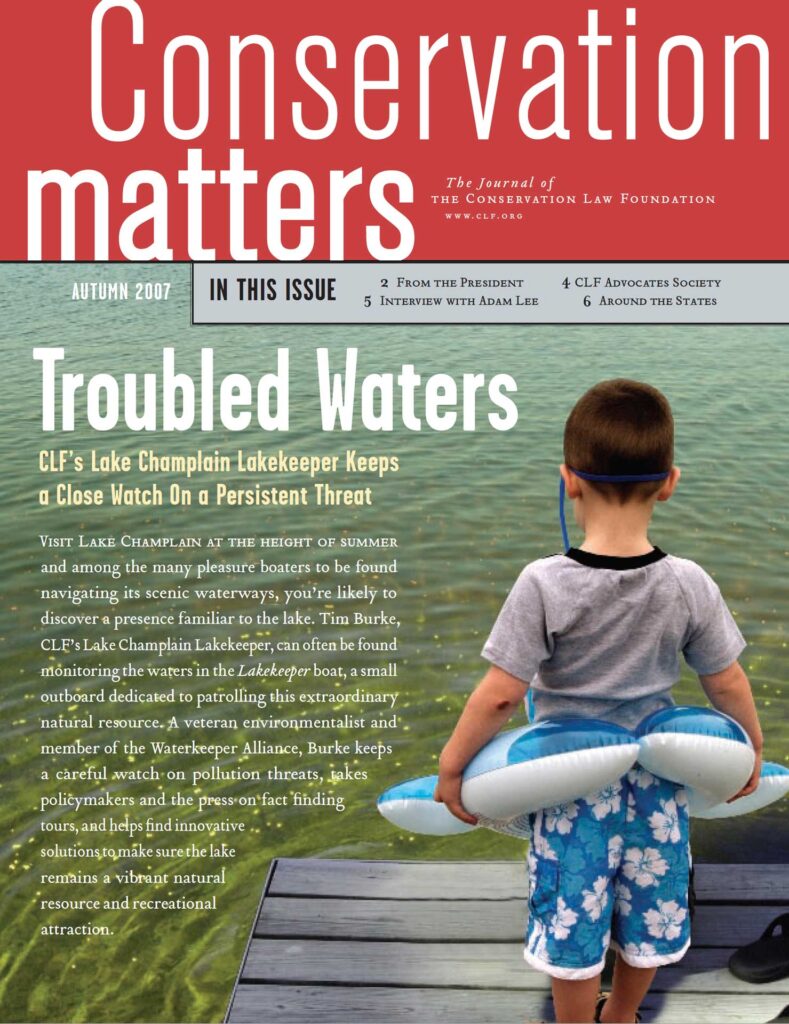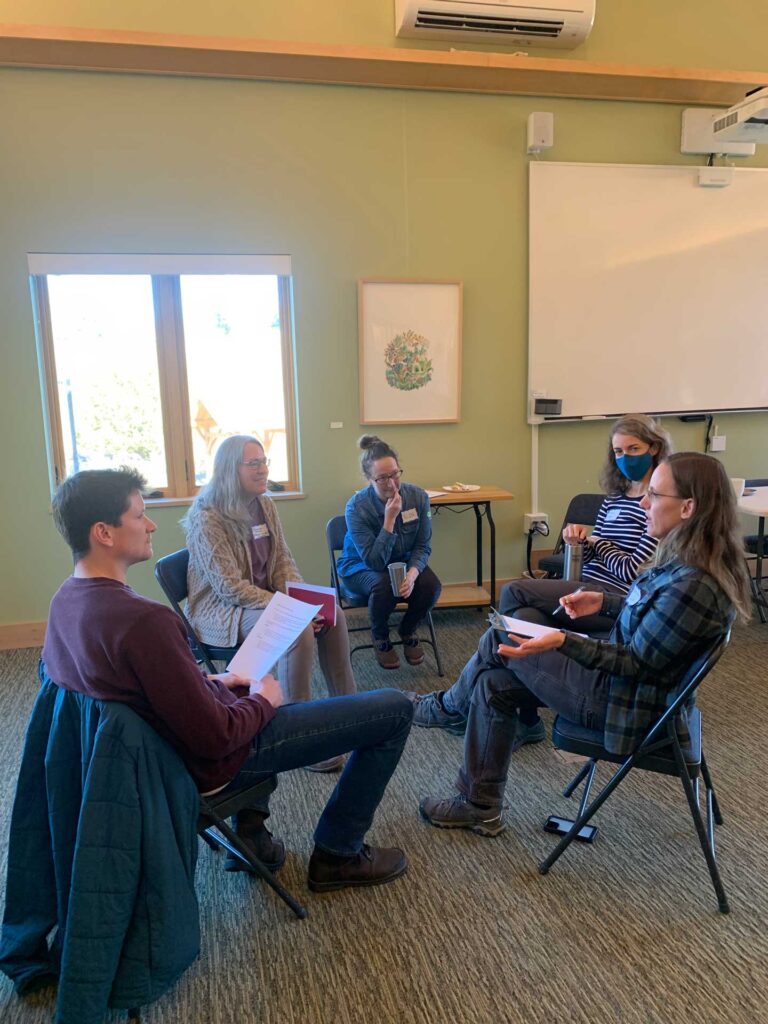
Water Quality
Pushing for safe, clean lakes, rivers, wetlands and drinking water.

Vermont’s water resources are a public trust — and only strong, effective action can curb phosphorus pollution in lakes, remove chemicals from drinking water, and protect and restore Vermont’s rivers, streams and wetlands.
Selected grantees
On behalf of our waters, these nonprofits are working for positive policy, funding, regulatory action and court rulings.

Conservation Law Foundation
In courts and with state regulators, the Conservation Law Foundation continues to push for long-term action on the phosphorus loading that causes cyanobacteria blooms on Lake Champlain:
- CLF monitors Vermont’s compliance with state and federal clean water laws and water-quality programs. Comprehensive stormwater permitting, enacted at CLF’s urging, will significantly reduce polluted runoff in the lake basin.
- After its thorough review showed that farming — the largest source of phosphorus pollution — often still falls short of meeting water quality standards, CLF advocates for fair but consistent enforcement.
- CLF works with a coalition of nonprofits — including VPIRG, VNRC and Vermont Conservation Voters — on better protecting Vermonters from PFAS, the “forever chemicals” that accumulate in the human body. The state now bans the sale of consumer products containing PFAS, requires testing of public drinking-water systems for five especially dangerous PFAS, and requires new drinking and surface-water standards for many more.

Vermont Natural Resources Council
From Lake Champlain to wetlands to drinking water, the Vermont Natural Resources Council works on critical water quality issues:
- As a lead organizer of the Water Caucus of Vermont nonprofits, VNRC tracks the state’s progress in implementing its landmark 2015 Clean Water Act, or Act 64, and argues for needed improvements — such as tougher programs to address polluting farm runoff.
- VNRC pushed with CLF, The Nature Conservancy and Vermont Audubon for a 2021 law addressing threats to Vermont’s wetlands, and it continues to advocate for stronger protections.
- Dams no longer in operation have been clogging Vermont rivers for decades. As a leader of the nonprofit Vermont Dam Task Force, VNRC has successfully pushed for the recent removal of dams in Northfield, Colchester, Bakersfield and Rutland, and is working on up to 20 more active dam removal sites.

Watersheds United Vermont
Watersheds United Vermont advocates a comprehensive approach to watershed restoration and protection, and provides a voice at the state level for community-based watershed organizations:
- WUV partners with other water-advocacy groups in working for full implementation of Vermont’s newly decentralized system of funding clean water initiatives.
- WUV continues to advocate for complete and inclusive state action on water quality — in policy, funding and monitoring.
- As part of the Water Caucus, WUV helps amplify and unify the messages of all Vermont’s water-quality citizen and nonprofit groups.

Connecticut River Conservancy
The Connecticut River Conservancy works in Vermont and three more states to clean up New England’s longest river, restore habitat, plant trees and remove dams:
- In 25 years of the Conservancy’s annual Source to Sea Cleanup, thousands of volunteers have relieved the great river of 43.3 total tons of trash.
- The Conservancy has planted almost 70,000 trees and removed 18 dams, restoring river habitat and re-opening many miles of the river to fish.
- In 2021 alone, community science volunteers pulled almost 26,000 pounds of invasive water chestnut plants and collected 1,700 water samples to be tested for bacteria, nutrient and microplastic pollution.
Apply for a Grant
Let’s shape Vermont’s future together. Learn more about our funding requirements and how to apply for a grant through the Lintilac Foundation.